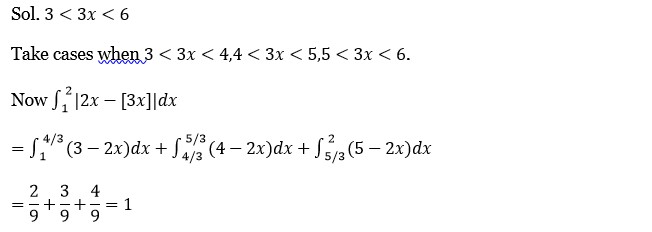Definite Integrals
Get insights from 36 questions on Definite Integrals, answered by students, alumni, and experts. You may also ask and answer any question you like about Definite Integrals
Follow Ask QuestionQuestions
Discussions
Active Users
Followers
New question posted
3 months agoNew answer posted
3 months agoContributor-Level 10
|z|-Re (z)≤1 ⇒ √ (x²+y²)-x≤1 ⇒ √ (x²+y²)≤1+x ⇒ y²≤1+2x=2 (x+1/2).
New answer posted
3 months agoContributor-Level 9
I = ∫ (π/24 to 5π/24) dx/ (1+³√tan2x). Using King's rule.
2I = ∫ (π/24 to 5π/24) dx = 4π/24=π/6. I=π/12.
New question posted
3 months agoNew answer posted
3 months agoContributor-Level 10
2(cos²θ/sin²θ) - 5/sinθ + 4 = 0
(2sinθ - 1)(sinθ - 2) = 0
sinθ = 1/2 only
∴ θ = π/6, 5π/6
↓↓
θ?, θ?
∫(π/6 to 5π/6) cos²3θdθ = ∫(π/6 to 5π/6) (1+cos6θ)/2 dθ = π/3
New answer posted
4 months agoContributor-Level 10
log (x + √ (x²+1) is an odd function.
f (-x) = log (-x + √ (x²+1) = log (1/ (x+√ (x²+1) = -log (x+√ (x²+1) = -f (x).
Integral of an odd function over a symmetric interval is 0.
Taking an Exam? Selecting a College?
Get authentic answers from experts, students and alumni that you won't find anywhere else
Sign Up on ShikshaOn Shiksha, get access to
- 66k Colleges
- 1.2k Exams
- 680k Reviews
- 1800k Answers

